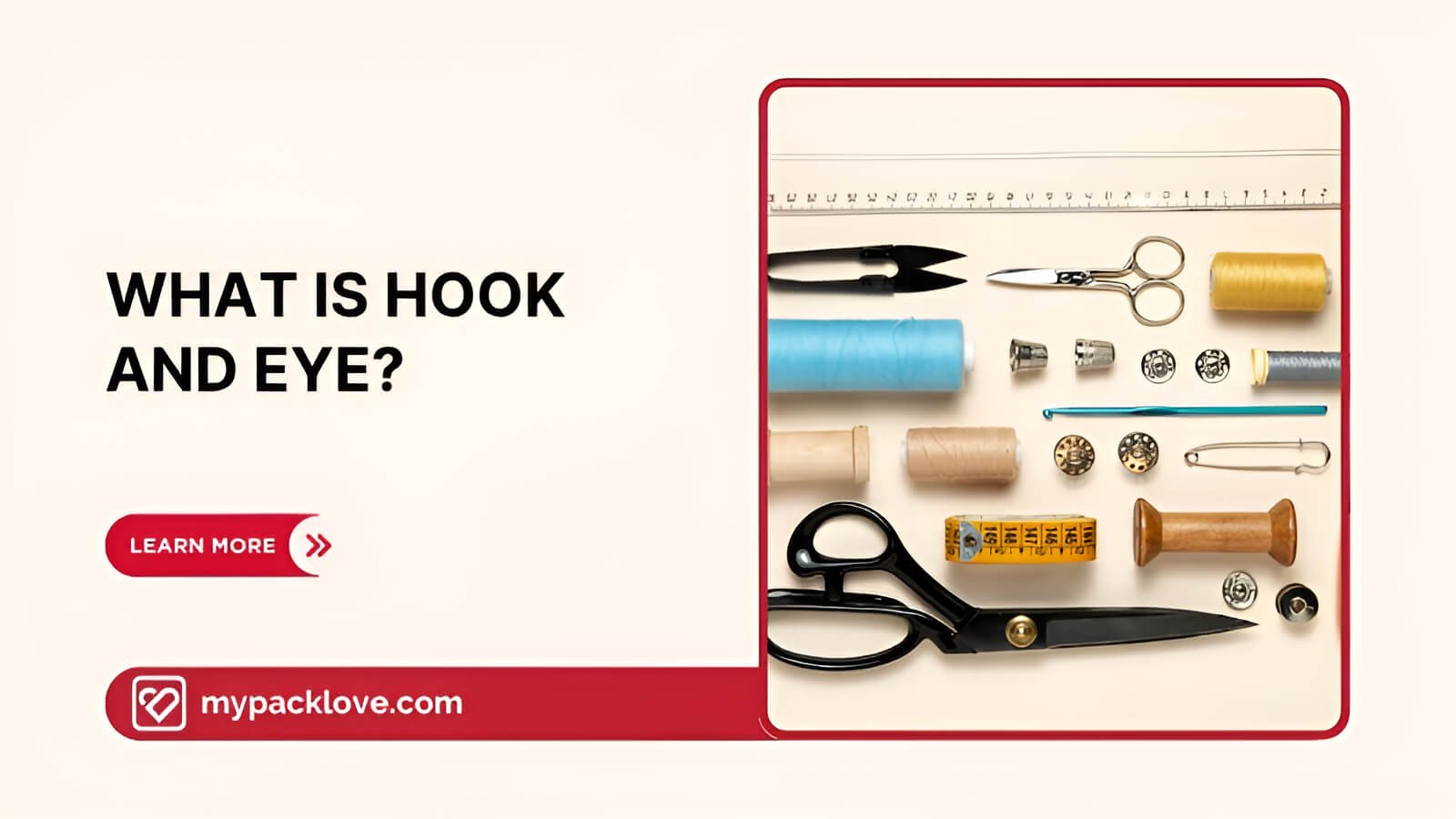What Is Hook and Eye? Ultimate Guide To Uses, Types And Sewing
Have you ever looked closely at the top of a dress zipper or the waistband of your pants? You might see a small metal thing holding it closed. That’s often a hook and eye! It is a common but sometimes unnoticed clothing fastener.
This small part is very important for making clothes fit well and look neat. In this easy guide, we’ll explore what a hook and eye is, look at the different types available, learn where they’re used on clothes, understand how to choose the right one, and find out how to sew one on. Let’s dive in!
1. What exactly is a hook and eye closure? The basics explained
A hook and eye closure is a type of fastener used on clothes. It has two small parts that join together: a ‘hook’ and an ‘eye’ (or ‘bar’). Its main job is to fasten two pieces of fabric together quietly and neatly. This simple garment hook fastener is a key part of many clothes.
The two main parts are:
- The hook: The hook component is a small piece of metal, bent like a ‘U’ or a curve. One end is shaped to catch something. The other end has tiny holes or loops so you can sew it onto fabric.
- The eye (or bar): The eye component (or bar component) is the part the hook catches. It can be a little round metal loop, called a ’round eye’. Or, it can be a straight, flat piece of metal, called a ‘straight eye’ or ‘bar’. The eye also has loops or holes for sewing it on. Round eyes for clothes are often used when two fabric edges just meet. Straight eyes for clothes are good when one fabric edge overlaps the other.
How does a hook and eye fastener work? It’s very easy. The hook piece is guided into or over the eye (or bar). When they connect, they make a secure fastening for clothing. They hold the fabric pieces firmly together until you want to unhook them. The hook and eye mechanism is simple but effective.
The main purpose of a hook and eye is to keep openings in clothing closed. They stop gaps from showing, help clothes look smooth, and add extra security. This is especially true at places that might pull open. They are important small apparel components that make clothes fit and look better, providing a neat garment closure.
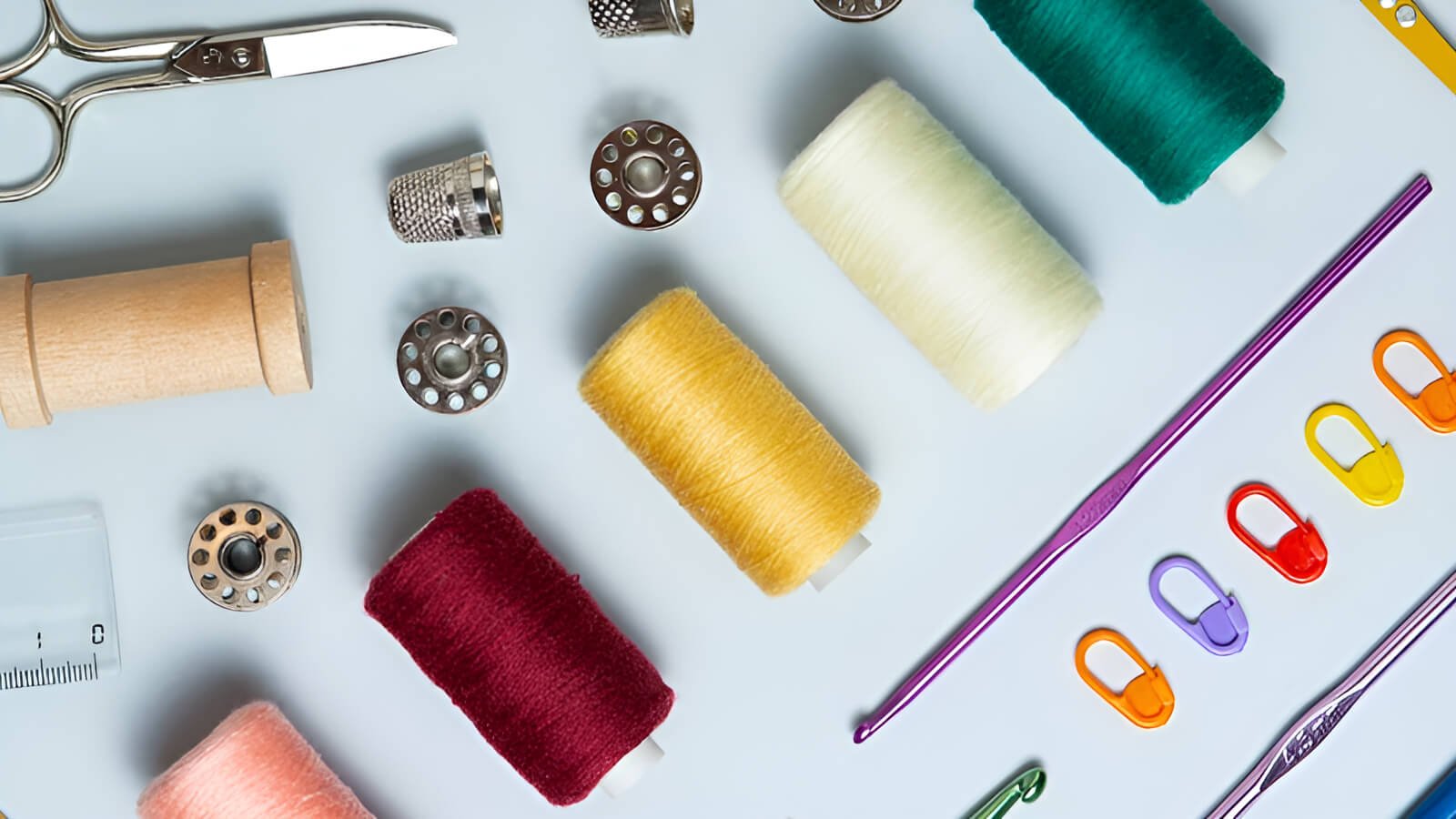
2. Why choose a hook and eye? The advantages of this small fastener
People choose hook and eye closures for clothes for many good reasons. Here are some main advantages of this versatile clothing fastener:
- Discreet closure: They can be very small. Often, they are hidden inside the clothing, so they are less visible than buttons or zippers. This gives a clean, neat look, making them a great discreet clothes fastener, especially for nice dresses or necklines.
- Security: Hook and eyes give a surprisingly strong and secure hold. They are a secure clothes fastener, great for parts of clothes that get pulled a lot, like waistbands or the top of a zipper.
- Flat finish: Unlike some buttons, hook and eyes lie very flat against the fabric. This is perfect when you want a smooth look, like under a fabric flap or on fitted waistbands. They are a good flat finish fastener.
- Versatility: You can find hook and eyes that work for almost any kind of fabric, from light silks to heavy wools. They also work on many different types of clothes.
- Reinforcement: They are often used with other clothing fasteners, like zippers. For example, a hook and eye at the top of a zipper helps take the pressure off the zipper and keeps the opening safely closed.
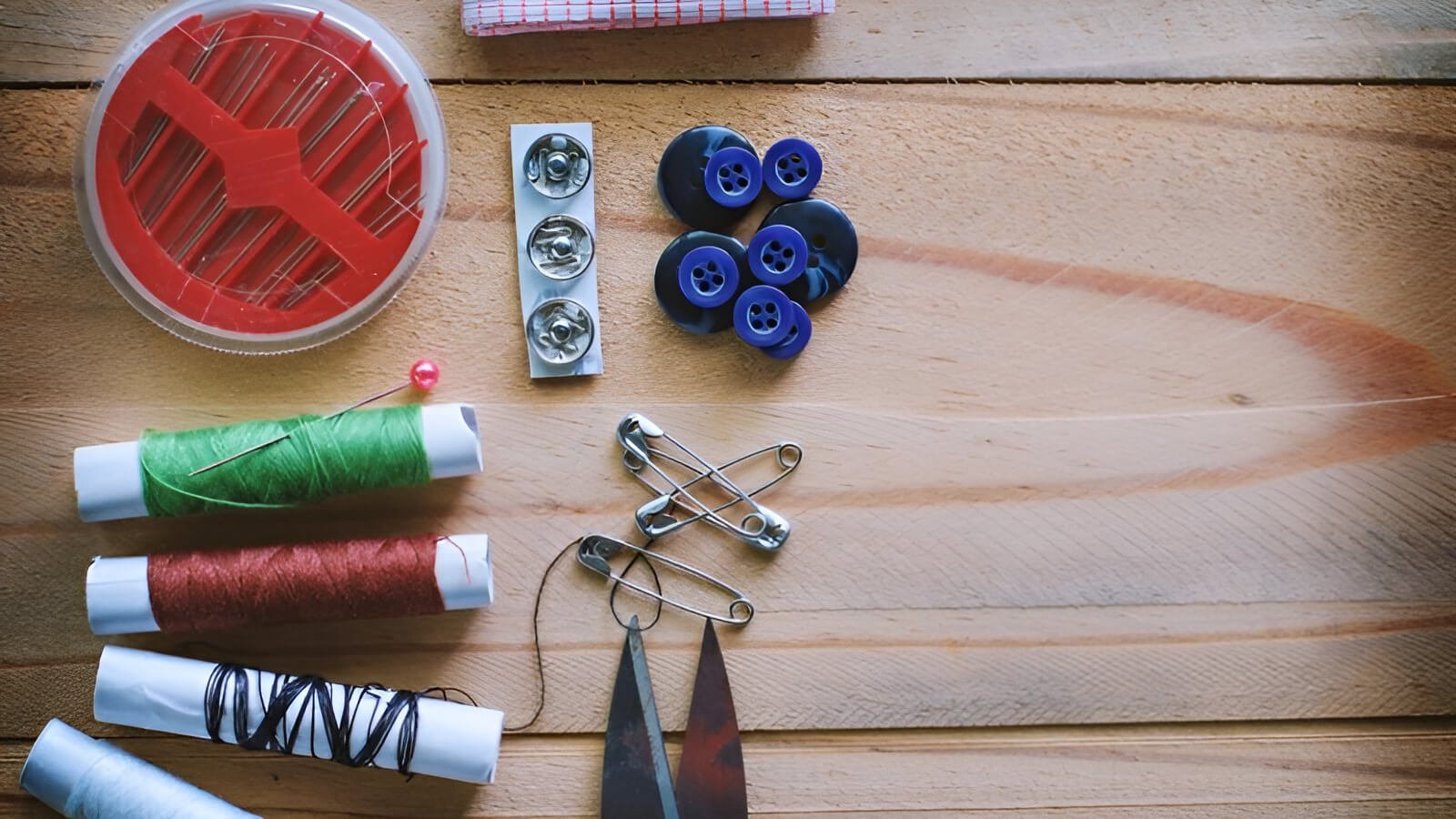
3. Exploring the different types of hook and eye closures
Hook and eyes come in several shapes and sizes. Each one is good for different things. Here are the most common different types of hook and eye closures you might see:

3.1 Standard sew-on hooks and eyes
These are the most common sew-on hook fastener type. They have small holes to sew them onto fabric. They come with a ’round eye’ (a circle loop) or a ‘straight eye’ (a flat bar). Round eyes are usually for when two fabric edges meet flat.
Straight/bar eyes are better when one fabric edge overlaps the other, like on a waistband. They are usually made of metal (steel, brass). Colors can be silver, black, or gold. These are common metal hook and eye finishes.
3.2 Trouser hooks and bars
These are bigger, flatter, and stronger, sometimes called ‘hook and bar closures’. They usually have a wide, flat hook and a separate bar. They are made for the waistband on trousers, skirts, and shorts. Good for places that need a strong, flat close. Many people know them as trouser hooks or skirt hooks.
3.3 Fur hooks and eyes
These are very big and strong, often called heavy-duty hooks. They are made for heavy things like real fur, fake fur, or thick coats. They often have a wider base to sew on tight and might be covered in fabric or look stronger. These are the fur hooks of choice.
3.4 Bra hooks and eyes tape
For bra backs, you find hooks and eyes already sewn onto soft fabric tape. These are bra fasteners. They come in rows, like two hooks and three rows of eyes, so you can adjust the fit (this is a 2×3 style). They are mainly for bra backs but also used in corsets and some fitted tops, making them essential in Lingerie Design.
3.5 Clear (plastic/Nylon) hooks and eyes
These are made from clear plastic hook and eye or [Nylon hook and eye](https://mypacklove.com/blog/poly-mailers/nylon-properties-and-uses-for-apparel-businesses/) material. They are almost invisible. They are the best hook and eye for delicate fabrics like thin silk, lace, or very light-colored see-through fabrics. Metal hooks might show or be too heavy. They are used in wedding dresses or nice lingerie.
3.6 Covered hooks and eyes
These are normal metal hooks and eyes covered with thread (like silk or cotton) or a very fine fabric. They are used for a fancy look, for decorative or ornamental designs, or to match the garment color perfectly. You might see fabric-covered hooks and eyes on expensive dresses.
4. Where are hook and eye closures commonly used? Practical applications
Now you know the types. So, what is a hook and eye used for in clothing? You can find them in many places, playing a key role in clothing construction details.

4.1 Dresses
You will often find a hook and eye on dresses, especially at the top of back zippers. This makes a neat closure and helps the zipper. They are also used at necklines (especially back openings), on sleeve cuffs, or inside a wrap dress to hold it. A hook and eye is common on the bodice (the top part of a dress).
4.2 Skirts and trousers
A hook and eye on skirts and trousers is very important at the top of zipper openings on waistbands. The hook and eye closes the waistband first, making it easier to zip up. This applies to a hook and eye on trousers as well.
4.3 Lingerie and bras
A hook and eye on bras is a main part of Lingerie Design. They are the usual closure for bra backs, letting you adjust the fit. Lingerie fasteners like these are also used on corsets and garter belts.
4.4 Blouses and shirts
They can be used at the neckline, maybe at the top of a front opening for a neat look, or to close sleeve cuffs. Sometimes they hold pretty details.
4.5 Formal wear & costumes
These formal wear closures are very common in wedding dresses, evening gowns, and for theater or old-style costumes. They close securely and can be hidden for a fancy look.
4.6 Outerwear
Sometimes on light jackets, like blazers, for one hidden closing point. Or inside, to hold flaps or linings.
5. Choosing the perfect hook and eye for your project: Key considerations
Picking the right hook and eye is important for a good look and to make sure it works well. Here are key things to think about when choosing the right garment closure:
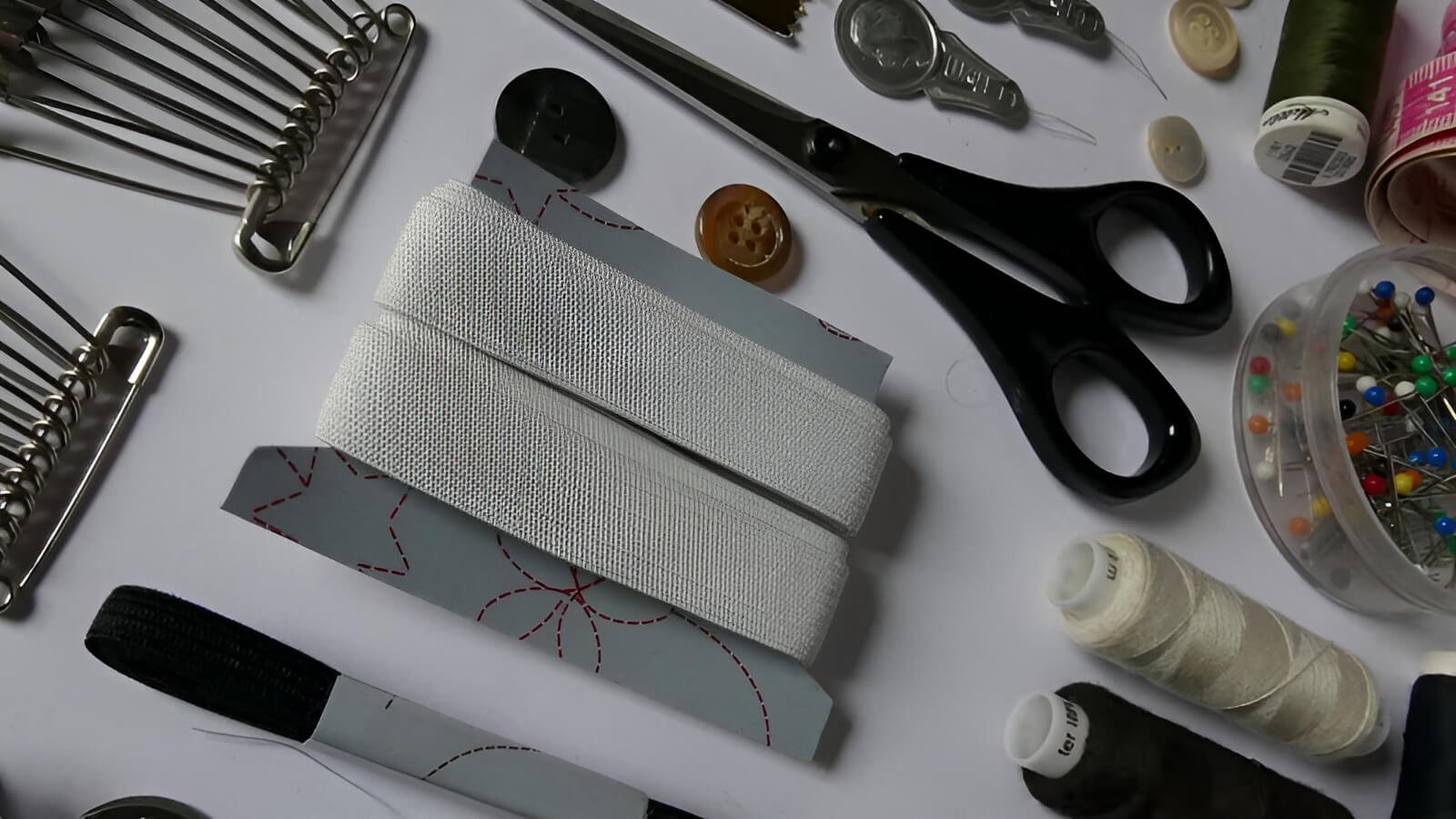
5.1 Fabric weight and type
- Light/delicate fabrics: For thin fabrics like silk or lace, choose small, light hooks (like size 0 or 1) or clear plastic ones. This stops the fabric from pulling. This is the best hook and eye for delicate fabrics.
- Medium-weight fabrics: For cottons or linens, standard sew-on hooks (like size 1 or 2) are usually fine.
- Heavy-weight fabrics/high stress areas: For denim, thick wool, or trouser waistbands that get pulled, you need stronger hooks like trouser hooks or bigger sew-on sizes (like size 3 or more).
5.2 Garment style and purpose
- Want a hidden closure? If the hook and eye should not be seen (like on a dress neck), choose a small size, a clear plastic one, or fabric-covered hooks and eyes that match your fabric.
- Need a strong closure? For trouser waistbands, you need strength. Pick trouser hooks or large, strong sew-on types.
5.3 Size of the hook and eye
- Hook and eyes often have number sizes (like 00, 0, 1, 2, 3). Usually, a smaller number means a smaller hook. For example, size 0 is smaller than size 3. Some, like trouser hooks, might be measured in mm. The hook and eye sizes explained this way help in selection.
- Match the size to your fabric and how much you want it to show.
5.4 Color and material
- Most are metal hook and eye types and come in silver, black, or gold color. Choose a color that matches your fabric or other metal parts on the clothes. Hook and eye color matching is important for a professional look.
- Clear plastic hook and eye options are great if you don’t want them to show on light fabrics.
- Fabric-covered hooks and eyes give a special, matched look.
5.5 Visibility
Think if the hook and eye will be seen outside, or hidden inside. This helps choose the color, material, and style.
6. A simple guide: How to sew on a hook and eye
Learning how to attach a hook and eye closure is a good sewing skill. Here’s a basic guide to attaching hook and eye fasteners for sewing on a standard hook and eye. This is a common job in garment assembly and part of essential garment assembly techniques.
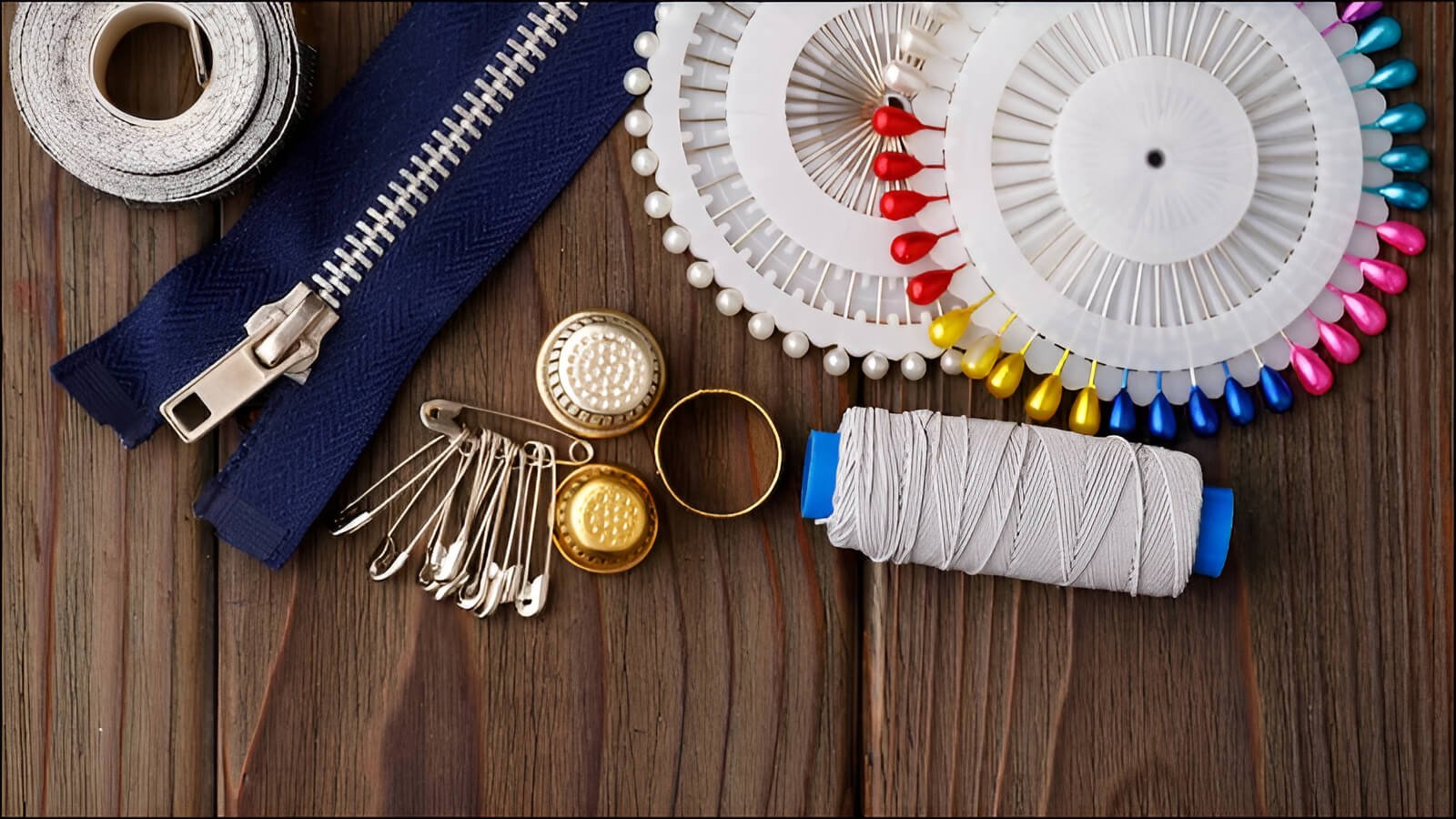
6.1 Materials needed
- Your hook and eye set.
- Strong thread (polyester thread is good; you can use two strands together for extra strength).
- A sewing needle that fits your fabric.
- A fabric marker or tailor’s chalk (pencil that washes out).
- Small, sharp scissors.
6.2 Positioning
- Decide exactly where your hook and eye will go. Mark the spots carefully with your fabric marker.
- The hook usually goes on the part of the garment that will be on top (overlap), about 1/8 inch (3mm) from the fabric edge.
- The eye (or bar) goes on the part underneath. It must line up perfectly with the hook when the garment is closed.
- Tip: Close the garment opening and pin it how it should look. Then, open it carefully and mark where the hook and eye will meet.
6.3 Sewing the hook
- Thread your needle, use double thread, and tie a knot at the end.
- Bring your needle up from the wrong side of the fabric. Come out through one of the small loops at the bottom of the hook.
- Sew around each loop using small, strong stitches. A buttonhole stitch or a whipstitch is good. Make about 3-5 stitches in each loop to hold it well. This is a key part of sewing hook and eye step-by-step.
- Important: After sewing the loops, add a few small stitches under the ‘head’ or ‘bill’ of the hook (the part that sticks out and hooks). This stops the hook from moving around and keeps it flat.
- Finish with a strong knot on the wrong side of the fabric, hidden if you can.
6.4 Sewing the eye (or bar)
- Place the eye (or bar) so it lines up perfectly with the hook you just sewed. When closed, the garment should lie flat.
- If using a round eye: Sew through its loops just like you did for the hook. If the fabric edges are meant to meet (not overlap), make sure the round eye sticks out just a tiny bit beyond the fabric edge so the hook can catch it easily.
- If using a straight bar/eye: Sew through the loops at each end of the bar.
- Again, finish with a strong knot on the wrong side.
6.5 Tips for a neat and secure finish
- Use thread that matches your fabric color if you want the stitches to hide.
- Always use double thread for strength.
- Keep your stitches small and even for a tidy look.
- Try to hide your knots between fabric layers or on the very inside.
- When you are done, test the closure. Does it fasten easily? Does it lie flat? These are good basic sewing skills to practice.
7. Caring for garments with hook and eye fasteners
To keep your clothes with hook and eyes nice for longer:
- Close hooks and eyes before washing: Always fasten any hooks and eyes before you wash the garment. This stops them from catching on other clothes or the fabric itself during washing clothes with hook and eye.
- Gentle wash cycles recommended: It’s often best to use a gentle wash for clothes with hook and eye fasteners. For extra care, put the item in a mesh laundry bag for proper garment care hook and eye.
- Check for loose hooks/eyes periodically and re-secure if needed: Now and then, check if any hooks or eyes feel loose. If they do, sew them back on tight to stop them from falling off.
- Consider how care instructions on labels (a Packlove product) can advise on this. Good [**care labels**](https://mypacklove.com/blog/label/garment-care-labels-guide-for-small-clothing-businesses/) on clothes often tell you how to care for items with special fasteners. At Packlove, we can help you design clear care labels for your products. A good label can remind people to handle garments with hook & eye gently. Explore Packlove care labels information on our website.
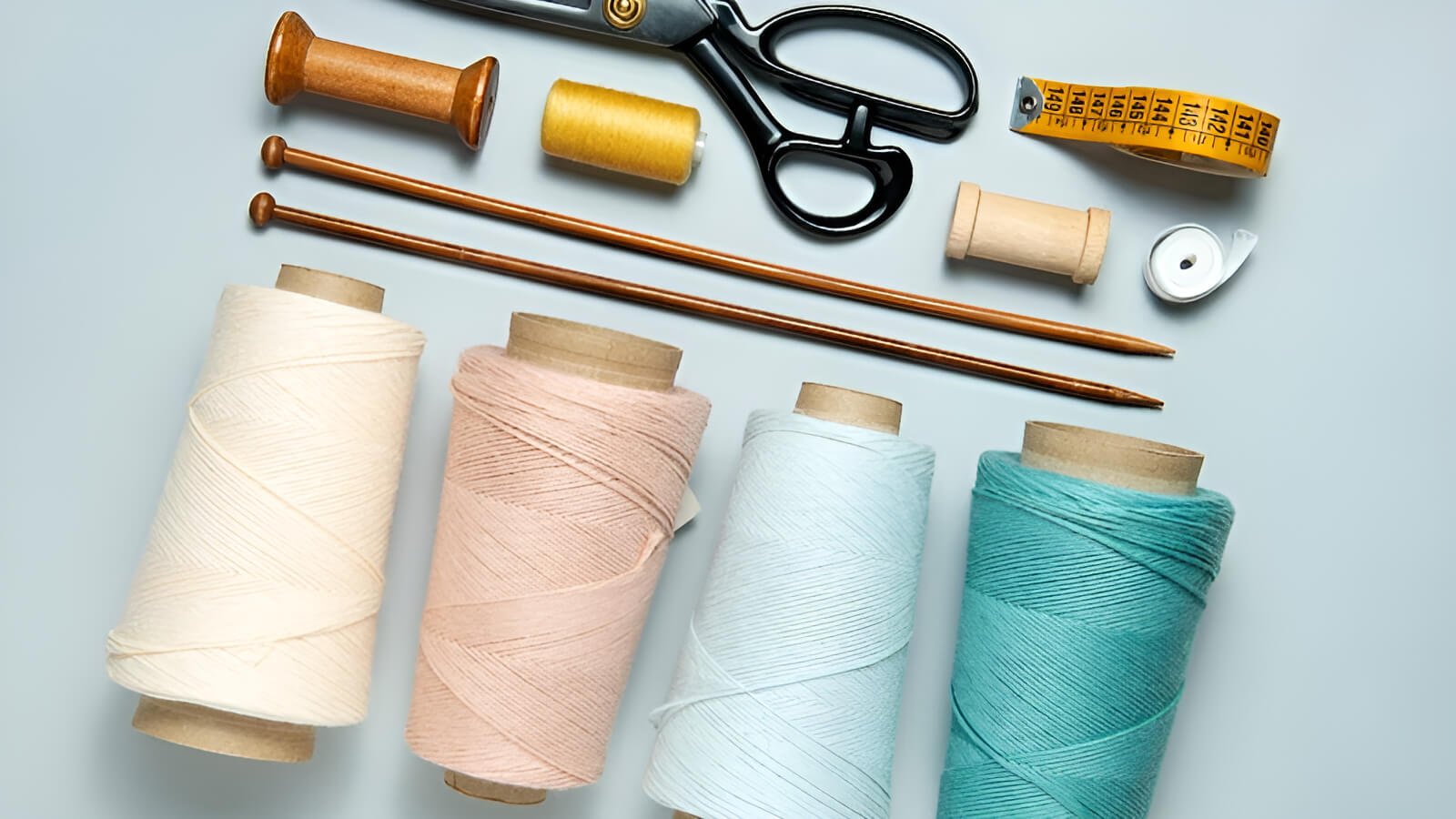
8. Quick tips & troubleshooting for hook and eye success
Here are a few extra tips for using hook and eyes:
- Reinforce delicate fabric before attaching if necessary. If sewing on very thin or loose fabric, make it stronger first. Sew a tiny square of [interfacing](https://mypacklove.com/blog/label/interfacing-key-to-professional-garment-finishes/) (a special stiff fabric, also known as a stabilizer) or a bit of strong fabric on the wrong side where the fastener will go. This gives your stitches a better hold.
- Use the correct type of eye (round vs. bar) for the application. Remember: round eyes are usually best when fabric edges meet. Bar eyes are for overlapping edges. Using the right one helps the clothes close neatly.
- Ensure the hook is not sewn too tightly, to allow easy fastening. When you sew the ‘head’ of the hook, don’t pull the stitches super tight. The hook needs a tiny bit of room to move so it can slip into the eye easily. This is one of the helpful tips for sewing hook and eye.
- What to do if a hook bends or breaks (replacement). If a small hook gets a bit bent, you might gently bend it back with small pliers. If it’s badly bent or broken, it’s best to carefully cut the old threads, take it off, and sew on a new one. This is how you can fix bent hook and eye issues, which are hook and eye common problems.

9. Hook and eyes: A small detail, a big impact on garment quality
A hook and eye might seem tiny, but if it’s the right one and sewn on well, it makes a big difference to the garment finish quality. It shows care and quality. A bad fastener can make clothes look cheap.
This attention to detail aligns with the quality that branded elements like custom labels and tags which Packlove offers also bring to apparel. High-quality custom Woven Labels, smooth hang tags, or other premium branding elements from Packlove work together with good making to make your brand look better.
Clothing labels from Packlove can complement garments featuring hook and eye closures. For example, a nicely finished garment using quality hook and eyes, paired with a premium Woven Label or a smart Value Booster Kit from Packlove, shows high quality. These are key apparel branding details.

10. Frequently asked questions (FAQs) about hook and eye closures
10.1 What’s the difference between a hook and eye and a snap?
A hook and eye closure has a hook that catches an eye or bar. A snap fastener has two round parts that press together. Hooks and eyes often lie flatter and can be stronger if something pulls sideways. Snaps are often faster to open and close but might not hold as tight. Both are good clothing fasteners, but for different jobs. It’s a common question: hook and eye vs snap fastener.
10.2 Can I use a hook and eye on stretchy fabric?
Yes, but it’s very important to make the fabric area stable first. Before sewing, put a small piece of non-stretch interfacing (a stiffening fabric) on the wrong side where the fastener will go. This stops the fabric from stretching when using a hook and eye for stretch material. Choose a light hook and eye for stretchy fabric.
10.3 Are there no-sew hook and eye options?
You might find some no-sew clothing fasteners like hooks (often for trouser hooks that clamp on). But most hook and eyes for clothes are made to be sewn on. Sewing gives a stronger, neater finish for most clothes.
10.4 What size hook and eye is best for a dress neckline?
For a dress neckline, a small to medium hook and eye (like size 0, 1, or 2) is usually good. The right size depends on how heavy the fabric is. For very light fabrics like silk, a smaller size or a clear plastic one is often better because it shows less. This will give you the best hook and eye size for dress applications.
10.5 Where can I buy hook and eyes?
Hook and eyes are common sewing notions. You can buy them at stores that sell fabric and sewing things, craft stores, and online. Knowing where to find hook and eye supplies is easy.
Explore more:
So, the simple hook and eye closure is a small but very useful part of clothing fasteners. Even though it’s basic, it works for many things and has been a good choice for closing garments for a long time. Next time you get dressed, look for these little fasteners – they do an important job making your clothes fit and look good!
At Packlove (mypacklove.com), we think knowing all the details, from sewing notions like hook and eyes to how great branding works, helps everyone make better products. We want to give helpful information and quality items for all your clothing branding and packaging needs, including apparel components like labels, tags, or packaging.
We aim to provide Packlove expert advice. If you have more questions about apparel components or need help with custom branding solutions like labels, tags, or packaging, Packlove is here to help. Contact us today! for Packlove contact for branding.

















